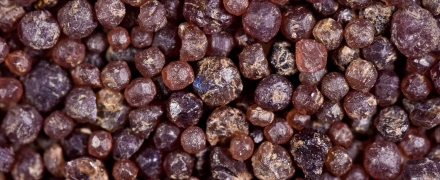open 10 am - 7 pm
laboratory is closed
Heat treatment is not always refining

Sometimes gemstones such as garnets, chrysoberyl, some beryls and other minerals may show signs of slight heat treatment, usually not able to affect their color and clarity characteristics. Initially, such a thermal effect was considered as overheating of the stone during cutting, but the fact that it resulted in changes in the entire volume of the stone excludes this possibility. It was hypothesized about the possible impact of retrograde metamorphism, but the study of deliberately rough stones from these deposits did not confirm it. The question remained open until we came across a method of enriching gemstones by heating the host rock. Often such treatment is applied to rocks consisting of hydrous minerals with a useful mineral resistant to slight heating - altered serpentinites and rodingites with garnet and vesuvian, mica with beryl and chrysoberyl, micaceous metasomatites with tourmaline. After such processing, the useful component is relatively easily separated from the host rock, with minimal damage to the stone, without changing the characteristics of color and clarity, however, traces of heat treatment often remain in the stone.
В геммологической практике бывают весьма увлекательные случаи с диагностикой ювелирных вставок
Но помимо редкости цвета и высокой стоимости таких камней, многие розовые камни выделяются одной замечательной особенностью – они проявляют плеохроизм, то есть в зависимости от положения осмотра камня он может иметь дополнительные оттенки – оранжевый или пурпурный.
Currently, gemstones are produced by two fundamentally different technological methods - the High Pressure - High Temperature method (“HPHT”, High-pressure & High-temperature) and the Chemical Vapor Deposition (“CVD”, Chemical vapor deposition) method. The "HPHT" method is the most tested classical synthesis method, which can be used both carbon deposition on diamond from flux melts and catalytic reactions. In "CVD" synthesis, diamond growth occurs on a seed during carbon deposition mainly from a gaseous medium at relatively low temperatures and pressures.
Jewelry and precious stones are just such a category of goods, when buying which you need to pay attention to many criteria.
Sogdianite is a rather rare mineral and more often it can be found as a collection material (moreover, in systematic collections), and it is extremely rare in jewelry.






